1880 to 1889 Important News, Key Events, Significant Technology
1880, 1881, 1882, 1883, 1884, 1885, 1886, 1887, 1888 and 1889 History
Major News Events From 1880 to 1889
- 1880 Tahiti , Originally discovered by the Royal Navy it was also visited by James Cook (in 1769)
- 1881 Greenwich Mean Time , Greenwich Mean Time becomes the standard by which time around the world is set as +_ GMT.
- 1882 Congress passed the Chinese Exclusion Act, which barred Chinese immigrants from the United States for 10 years.
- 1883 The Orient-Express began running between Paris and Constantinople in 1883
- 1884 The Oxford English Dictionary
- 1885 The Statue of Liberty funded by the French people. Shipped in 1885 and placed onto Liberty Island in New York Harbor
- 1886 Karl Benz patents his first automobile, the Motorwagen
- 1887 First American Golf Club
- 1888 George Eastman introduces the Kodak No 1, a simple and inexpensive Box Camera
- 1889 Oklahoma Land Rush , The Oklahoma Land Run of 1889 begins at high noon on on April 22nd ,
Find More Detailed Information Below
1880
Tahiti , Originally discovered by the Royal Navy it was also visited by James Cook (in 1769) and William Bligh (in 1788). Its earliest European settlers helped the Pomare family achieve a rulership over the island. These settlers have brought Christianity with them, and the Pomares ruled until Pomare V gave it to France (after which it became a French colony).
1881
Sitting Bull , Hunger and cold eventually forced Sitting Bull, his family, and nearly 200 other Sioux in his band to return to the United States from Canada and surrender on July 19th , 1881.
Early Prohibition , Kansas had been prohibiting alcohol to Indians since 1860, but it wasn't until 1881 that a State law was passed on its other forms of distribution. No one had permission to brew or sell intoxicating liquors (although its consumption was allowed for medicinal purposes).
Billy the Kid , Billy the Kid, or William Bonney or Henry McCarty, had been captured in December 1880, and was tried for murder in Mesilla, New Mexico in April 1881. He was found guilty and escaped (after killing two deputies) before being shot by Sheriff Garrett (his earlier captor) on July 14th .
American Red Cross , Clara Barton inspired by the work of the International Red Cross establishes The American Red Cross in Washington, D.C. on May 21st, 1881.
Greenwich Mean Time , Greenwich Mean Time becomes the standard by which time around the world is set as +_ GMT.
Gunfight at the OK Corral , Tombstone, Arizona is the site for one of the most famous gunfights in history – the Gunfight at the O.K. Corral on October 26, 1881. Some of the recognizable names who participated include Doc Holliday, Wyatt Earp and his two brothers, Morgan and Virgil.
1882
Electric Clothes Iron , Henry Seeley patents his "electric flatiron" on June 6, 1882. Electric Irons replaced the use of Charcoal filled irons and flat irons (which were heated on a fire prior to use), when the first thermostatically controlled electric irons (with temperature control) appeared in the 1920s they quickly replaced the use of the more traditional irons.
First Electric Fan , Dr Schuyler Skaats Wheeler invents the first electrically powered mechanical fan.
The 1812 Overture , First played in the Cathedral of Christ the Saviour in Moscow on August 20 , 1882, the 1812 Overture was Tchaikovsky's tribute to the anniversary of Alexander II's accession to the throne. He had planned for it to be played on the square before the cathedral with its bells and cannon fire as a supplement to the orchestral work, but the assassination of Alexander II had circumvented his plans, and he became skeptical of its composition. It was actually a tribute to his countrymen's defeat of Napoleon's march into Russia. On having fought the Battle of Borodino and found Moscow razed to the ground, the Grande Armée was forced to return to central Europe (with one tenth of its men).
First investor-owned electric utility , Thomas Alva Edison (Edison Illuminating Company) builds and opens the first power station on Manhattan Island, New York which provided 110 volts direct current (DC) to 59 customers in lower Manhattan.
Chinese Exclusion Act , Congress passed the Chinese Exclusion Act, which barred Chinese immigrants from the United States for 10 years.
1883
The Orient-Express , The Orient-Express began running between Paris and Constantinople in 1883, and covered France, Germany, Austria, Hungary, Romania and Bulgaria. It had been built by the Belgian Georges Nagelmackers, whose company La Compagnie Internationale des Wagons-Lits et des Grands Express Européens had provided the carriages. Its fabled luxuries included Oriental rugs, velvets, mahogany and fine cuisine. The original journeys were completed by ferry across the southern Black Sea (from Varna to Constantinople).
Brooklyn Bridge , The Brooklyn Bridge is one of the oldest suspension bridges in the United States. Connecting the New York City boroughs of Manhattan and Brooklyn by spanning the East River and when it was opened in 1883 it was the largest suspension bridge in the world and had taken 13 years to complete.
1884
The Oxford English Dictionary , The original Oxford English Dictionary was a twelve volume dictionary that included all words from the mid-12th Century onwards. Its publication was prompted by the London Philological Society, whose president, James Murray, had made him the primary editor. It was decided that it would include a definitive, etymological and historical perspective to its entries.
Adventures of Huckleberry Finn , The first excerpts of the Adventures of Huckleberry Finn were serialized in the Century Magazine of of December 1884 (and was serialized until February 1885). This was, at the time, a commonplace means of distribution and publication, though not one that Mark Twain himself approved of.
1885
The Statue of Liberty , The Statue of Liberty was made in France, and was proposed by Edouard de Laboulaye, sculpted by Frédéric-Auguste Bartholdi and funded by the French people. It was shipped in 1885 to New York and placed onto Liberty Island in New York Harbor. It wasn't dedicated by Grover Cleveland until on October 28th , 1886.
Washington Monument , The Washington Monument was dedicated in 1885 and is a granite monument that was made as a tribute to George Washington. It is 555 feet high, and faces the White House.
Modern Photograph Film , George Eastman created the modern photograph film technology. The technology that the modern camera is based on was created several hundred years ago. Although the ancient ideas were far away from the types of cameras that we know, they were well ahead of their time in relation to the technology and materials that they had at their disposal. It wasn’t until 1885 when George Eastman created the modern photograph film technology that made cameras accessible to the masses.
Beginnings Of The Modern Bicycle , J. K. Starley, the English inventor and industrialist, starts selling the Rover Bicycle which uses a chain drive connecting the frame-mounted cranks to the rear wheel.
1920's Fashion
Ladies Hats From The Decade
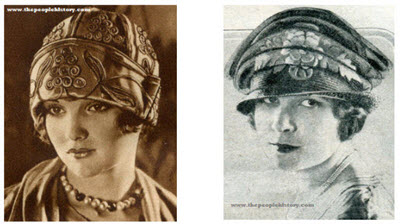
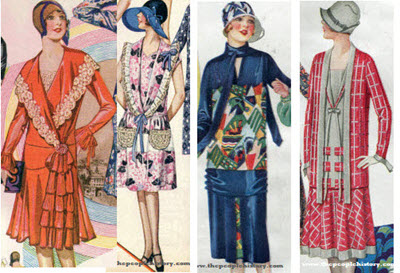
Part of our Collection of Childrens Clothes From the Decade
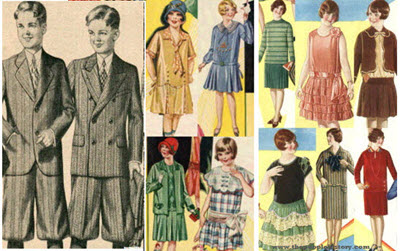
Childrens Toys From The 1920's
Part of our Collection of Toys from The 1920's
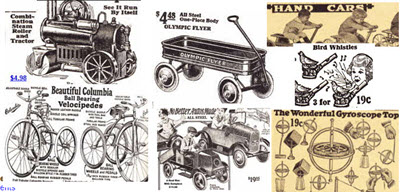
1920s Music
From our 20's Music Page
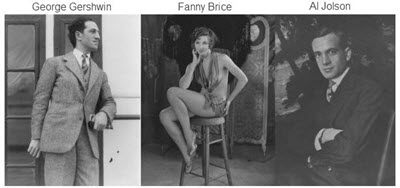
1886
Automobile Beginnings , Karl Benz patents his first automobile, the Motorwagen, which was three wheeled, on January 29th. His work had been done in Mannheim, and had an internal combustion engine that went on to become the predecessor of his first four wheeled automobile in 1893 . His company, Benz and Co., had been started in 1883.
Linotype Machine Installed At New York Tribune , The First Linotype Machine is installed at the New York Tribune. Ottmar Mergenthaler, a German Born inventor who emigrated to the United States, had invented the Linotype a machine that could easily and quickly set complete lines of text for use in printing machines. This machine revolutionized the art of printing.
Haymarket Square Riot In Chicago , On May 4th , 1886, at the Haymarket Square in Chicago, an unknown person threw a pipe bomb at the police line as they dispersed the Labor Rally in support of striking workers at the McCormick Harvesting Machine Co. plant. The bomb blast and ensuing gunfire resulted in the deaths of eight police officers, mostly from friendly fire, and an unknown number of civilians.
Coca Cola , John Pemberton begins selling his formula (a mixture of cocaine and caffeine) at Jacob's Pharmacy in Atlanta, Georgia in 1886. It was initially sold as a patent medicine for five cents a glass at soda fountains. Coca Cola no longer contains Cocaine but that is how it got its name.
First Dishwasher , Josephine Cochrane, a housewife from Shelbyville, Illinois, invents and builds the First Dishwasher. A motor turned the wheel while hot soapy water squirted up from the bottom of the boiler and rained down on the dishes. The company she created is later bought by Kitchenaid (part of Whirlpool).
1887
Earmuffs are patented , Earmuffs had been invented in Maine in 1883, although we don't have a specific date for this enlightenment (enmufflement), the genius involved was the equitable Chester Greenwood of Farmington, and this town still celebrates his skills on December 21st each year. Thankfully earmuffs were patented in March 13th, 1887. Patent number 188,292.
First American Golf Club , The Foxburg Golf Club is organized, and Joseph Fox provided the land upon which to build a golf course in located in Foxburg, Pennsylvania. It is the oldest course "in continuous use" in the United States.
1888
The National Geographic Society , Founded on January 27th, 1888 in Washington D.C., the National Geographic Society has gone on to become the world's largest scientific and geographical distribution organization. Its original premise was 'for the increase and diffusion of geographic knowledge.' In the field, National Geographic has supported exploration, education and conservation and a number of geological, natural and literary sources since 1888.
Kodak Box Camera , George Eastman introduces the Kodak No 1, a simple and inexpensive Box Camera that brings photography to all. Because of their simplicity, ease of use and cost The cameras became an enormous success.
Inflatable Tires , The Scottish Inventor John Boyd Dunlop patents the first practical pneumatic or inflatable tyre.
1889
The Eiffel Tower , The Eiffel Tower, or the Tour Eiffel, was opened on March 31st, 1889, and was the work of a Gustave Eiffel, who was a bridge engineer. It was made for the centenary of the French Revolution and was chosen instead of over one hundred other plans that were given. Eiffel's engineering skills would preface later architectural designs. The Tower stands at twice the height of both the St. Peter's Basilica and the Great Pyramid of Giza. Its metallic construction was completed within months.
Oklahoma Land Rush , The Oklahoma Land Run of 1889 begins at high noon on on April 22nd , 1889, with an estimated 50,000 people lined up for their piece of the available two million acres, settlers could claim lots up to 160 acres in size. Provided a settler lived on the land and improved it, the settler could then receive the title to the land under the Homestead Act of 1862 . This land had previously been occupied by Indians but the Indian Appropriations Bill approved the transfer of two million acres for settlement.
Wall Street Journal , Dow Jones & Company, begins publication of the "Wall Street Journal", on July 8th specializing in news relevant to Investors and members of the Financial community. The Journal featured the Jones 'Average', the first of several indexes of stock and bond prices on the New York Stock Exchange.
Johnstown Flood , Following several days of extremely heavy rainfall on on May 31st the South Fork Dam situated upstream of the town of Johnstown, Pennsylvania, USA, fails causing a tidal wave, over twenty feet in height to sweep over Johnstown, PA eight miles below. The wave swept everything before the avalanche of water including houses, factories, and bridges. The death toll is estimated to be in the thousands as there was very little warning for residents.
Several states are added to the Union , North Dakota became the 39th state, South Dakota became the 40th state, Montana became the 41st state, and Washington became the 42nd state.